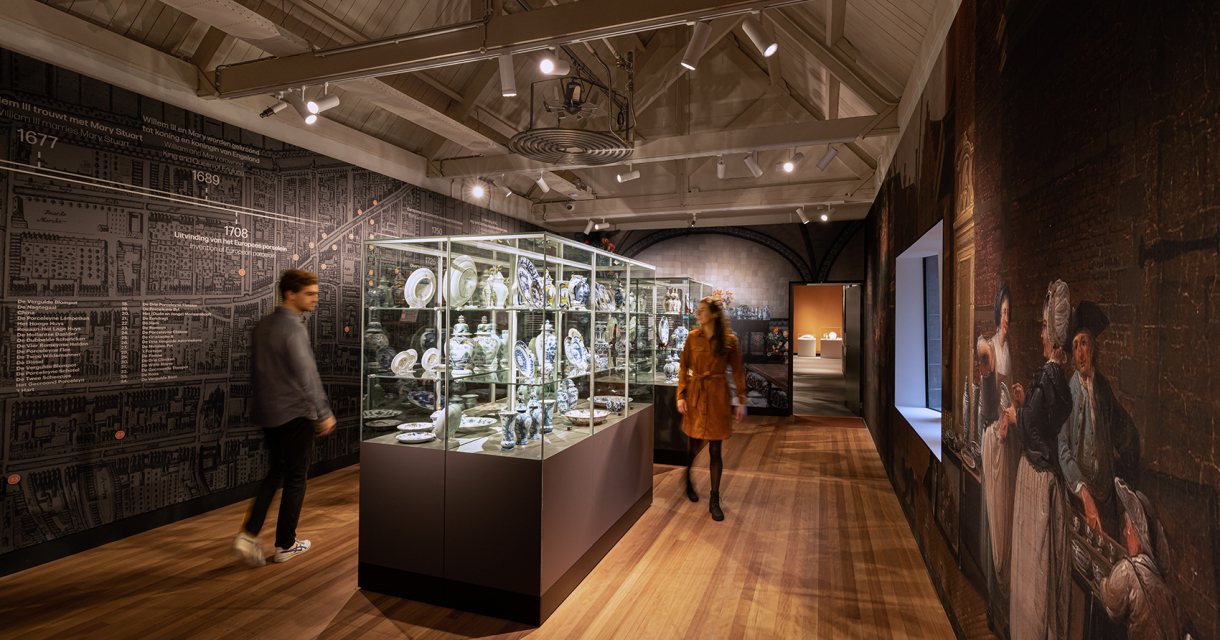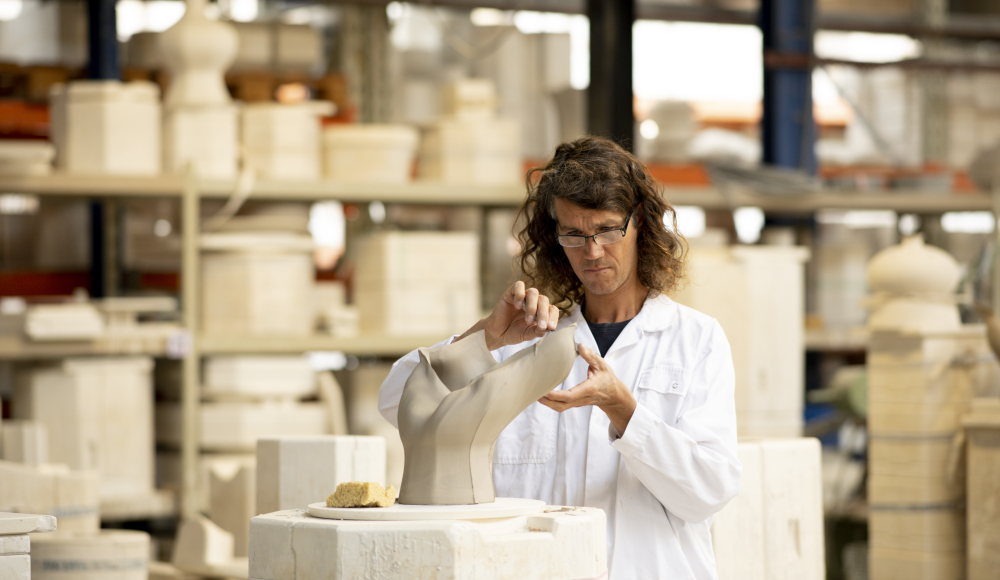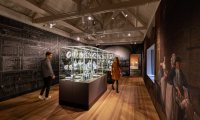
Visit Royal Delft Museum and experience the authentic, Dutch craft. Brushes gently touch the white earthenware, while elsewhere clay is poured into handmade moulds. Artisans have been creating the iconic Delft Blue for almost 400 years. Royal Delft, founded in 1653, is the last remaining pottery factory from the 17th century in Delft. Discover all about the history, craft and innovation of this royal company during a visit to the Royal Delft Museum and factory. Besides visiting Royal Delft Museum, you can also experience the craft yourself by taking a painting workshop. This way, you will create your own Delft blue plate to hang on your wall at home!
The history of Royal Delft
Royal Delft/The Royal Porcelyne Bottle was founded in 1653 by David Anthonisz v.d. Pieth and is the only remaining Delft pottery factory. The world-famous pottery is still produced at the factory and painted entirely by hand according to centuries-old traditions. Delft Blue porcelain has a rich history, dating back to the early 1600s. Chinese porcelain, painted white on blue, was wildly popular in the V.O.C. era among wealthy people such as European royal houses. The V.O.C. ships brought porcelain from China along with spices. When civil war broke out in China, Dutch potteries seized their chance. They started imitating the hand-painted porcelain and so the Delft Blue industry was born, known worldwide as a purely Dutch product.


The renovated museum rooms
Since 10 March, Royal Delft's completely renovated museum rooms have been open to the public. In five unique rooms, you will be taken through 370 years of craftsmanship, where tradition and innovation go hand in hand. Explore Royal Delft's impressive works of art, meet the craftsmen behind the famous Delft Blue and discover China's influence on this iconic pottery.
Collection
The museum houses a large number of historical pieces, including the Royal Delft Night Watch. The world-famous painting from 1642 measures no less than 363x437 cm. To make the Royal Delft Museum version of the painting, 480 tiles of 18x18 cm were needed. In the ceramic room you can see the building ceramics that can also be seen below in the old post office of Rotterdam. Be surprised by the changing exhibition that can be seen in the ceramic room.
Discover the monumental building
In the Ceramic Rooms and the inner garden you can see replicas and examples of architectural work that was mainly executed in the period 1880 to 1930. Pillars, tile pictures, ceramic elements and even a fountain decorate these rooms. In the past, Royal Delft has manufactured building ceramics for, among others, the Peace Palace in The Hague, the Beurs van Berlage in Amsterdam, but also the Old Post Office in Rotterdam.


Royal Delft Museum
Painting workshops
At Royal Delft, you can do more than just view Royal Delft Blue. For example, you can attend workshops and book packages. For example, you can paint your own tile or plate and during the holidays there are special children's workshops.
Discover how the world-famous Delft Blue is made and create your own work of art for your home. Choose a tile or plate and experience the craft of Delft Blue painting yourself. The painting workshops take place every Tuesday, Wednesday, Thursday, Saturday and Sunday at 14:00. The painting workshops can be booked online for up to 26 people and last 1 to 1.5 hours on average. The workshops are suitable for children from 7 years old. If you would like to do a painting workshop with more than 26 people, please contact events@royaldelft.com.
Brasserie1653
Brasserie1653 is a hidden gem of Royal Delft, an oasis of calm with a beautiful courtyard garden. You can always, with or without a visit to the museum and factory, enjoy lunch or a cup of coffee and apple pie at Brasserie1653. At the brasserie, they offer top-quality organic local produce.
Accessibility Royal Delft
From Delft railway station, you can walk to Royal Delft in 15-20 minutes. Royal Delft offers free parking at the back and side of the building.

